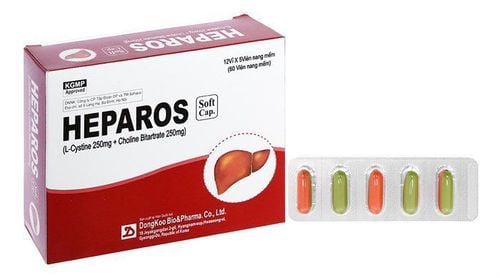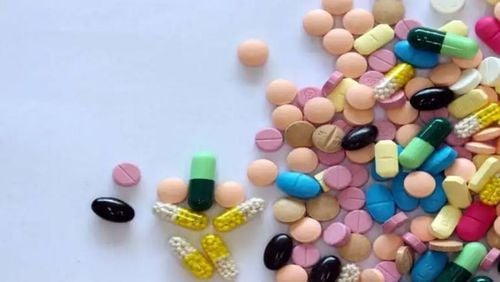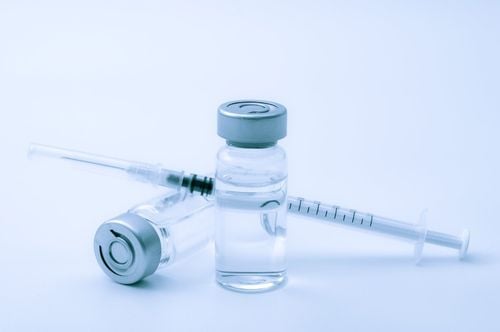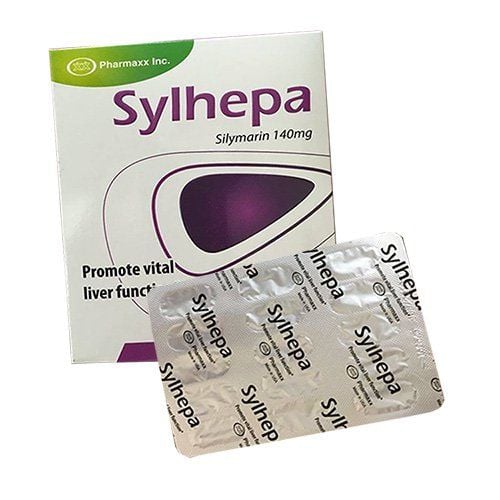This is an automatically translated article.
Article by Dr.BS Phan Nguyen Thanh Binh - Head of the Department of Nutrition - Dietetics - Department of Pediatrics - Neonatology, Vinmec Central Park International General Hospital
Free radicals are formed during the life of the body, helping the synthesis and breakdown of substances in the process of cell metabolism. However, if formed too much also causes bad effects, increasing the risk of disease. Therefore, the oxidation balance will help the body avoid health risks.
To avoid the excessive increase of free radicals that damage cells and balance the oxidation, the body also has mechanisms to destroy free radicals. Those are enzymes available in cells (glutathione reductase, glutathione peroxidase...) or antioxidants that are not of an enzymatic nature such as vitamins A, E, C, beta carotene, lycopene, selenium... So the harms of oxidative stress on health and prevention?
1. Harmful effects of oxidative stress
Oxidative imbalance is often triggered by a number of factors from lifestyle, stress and living environment including:
Air pollution Tobacco smoke Drinking alcohol Toxic substances High blood sugar Excessive use unsaturated fats improperly processed Radiation, including excessive sunbathing Infections caused by bacteria, fungi or viruses Absorbing too much iron, magnesium, copper or zinc Too much or too little oxygen in the body High-intensity and prolonged exercise, which causes tissue damage, antioxidant deficiency, over-addition of artificial antioxidants, oxidative stress, especially an excessive increase in dangerous free radicals, can cause many cell damage such as: Superoxide, ozone, hydrogen peroxide, lipid peroxy, hydroxyl radical, ... damage healthy cells, lead to cancer and aging, weaken the immune system. Many studies have found a link between excess free radicals and many diseases:
Some brain diseases: Neurodegeneration, migraine, stroke, brain cancer Eye diseases: Retinal degeneration Retinopathy, macular degeneration, cataracts Skin diseases: Aging skin, psoriasis, dermatitis Some diseases of the immune system: Chronic inflammation, autoimmune disorders, lupus, inflammatory bowel disease intestine Heart disease: Heart failure, myocardial fibrosis, high blood pressure, myocardial ischemia, myocardial infarction Blood vessels: Re-narrowing, atherosclerosis, hypertension Lung disease: Bronchial asthma , chronic obstructive pulmonary disease, allergies, lung cancer Kidney diseases: Chronic kidney disease, kidney transplant rejection, glomerulonephritis Multi-organ: Diabetes, aging, chronic fatigue... Pathology about joints: Rheumatism, osteoarthritis, psoriatic arthritis

2. Fortifying foods with antioxidants
Antioxidants are not the name of a substance, but a group of substances consisting of hundreds of types. Each type has its own role and can interact with each other to help the body function effectively.
Outstanding natural antioxidants include:
Vitamin A Vitamin C Vitamin E Beta-carotene Lycopene Lutein Selenium Manganese Flavonoid Polyphenol ... Each antioxidant performs a different and irreplaceable function. for each other. That's why a varied diet is so important.
3. What foods are antioxidants found in?
The best sources of antioxidants are plant-based foods, especially fruits and vegetables. Brightly colored foods often contain the most antioxidants. Foods that are particularly rich in antioxidants are often referred to as “superfoods.” To get some specific antioxidants, try to add the following to your diet:Vitamin A: rich in liver, egg yolk, cod liver oil, ... Vitamin C: abundant in berries such as: acerola, guava, orange, tangerine, grapefruit, papaya, mango, apple, grape, kiwi, tomato sour, and many vegetables such as cauliflower, radish, spinach, bell pepper, spinach... Vitamin E: abundant in nuts, sunflower seeds and other vegetable oils, and vegetables green leaf. Beta-carotene: abundant in brightly colored fruits and vegetables, such as carrots, peas, spinach, and mangoes. Lycopene: abundant in pink and red fruits and vegetables, including tomatoes and watermelon. Lutein: abundant in green vegetables, leaves, corn, papaya and oranges. Selenium: found in rice, corn, wheat and other whole grains, as well as nuts, eggs, cheese and legumes.

Other foods that are also good and abundant sources of antioxidants include: eggplants, legumes such as black or peas, green and black tea, red grapes, dark chocolate, pomegranates, goji berries, blueberries, apples, broccoli, spinach,...
There are no recommendations for daily antioxidant intake, nor is there a single food or food group. is the sole focus. You should make sure to incorporate a variety of fruits, vegetables, nuts and whole grains into your daily menu for health benefits.
Fortifying antioxidants from foods is quite safe, however, high doses of artificial sources of antioxidants can be harmful, so you need to be cautious. Example:
High intake of beta-carotene is associated with an increased risk of lung cancer in smokers. High doses of vitamin E have been found to increase the risk of prostate cancer. Use of certain antioxidant supplements has been linked to an increased risk of tumor development. Antioxidant supplements can also interact with certain medications. In short, seek out natural sources of antioxidants from foods through a healthy, varied diet. Although there is not much evidence that taking antioxidant supplements can fight disease while taking high doses can be harmful. Therefore, you must consult your doctor before using any antioxidant supplement.
Please dial HOTLINE for more information or register for an appointment HERE. Download MyVinmec app to make appointments faster and to manage your bookings easily.














